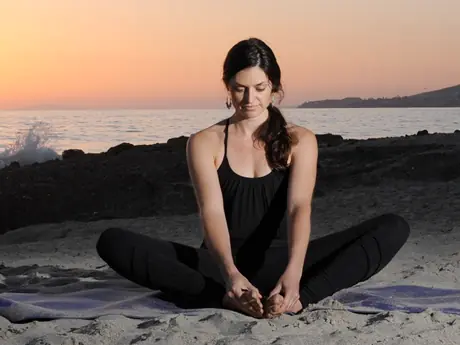For the Rest of Us:
Take Short Mindfulness Breaks"Even I get too busy to meditate," says Jha. "Then I remember the Marines in the study calling my colleague while they were deployed to ask for mindfulness pointers, and I think, If they can do it in a war zone, I can do it in my office!" Try this technique Marines use anywhere: Sit upright, focus on your breath, and pay attention to a physical sensation, such as the feel of air in your nostrils. When your mind wanders, notice the disruption, then return your attention to that simple sensation. Jha herself now meditates 5 to 10 minutes at a time, several times a day.
For Stress Survivors:
Remember the Tough StuffCognitive behavioral therapy (CBT)—which helps you recognize and change knee-jerk reactions to stress triggers—is one of the most effective methods of managing PTSD. In the military, such training can include a technique called "exposure therapy," in which soldiers relive disturbing past experiences in small doses with a therapist until the memories become less overwhelming. Along the same lines, doctors have achieved promising results by asking patients who developed PTSD following an illness to imagine a relapse.
Such intense visualizations should be undertaken only with a licensed professional, but "practicing" feeling stressed can help anyone cope day to day, says Elizabeth Carll, PhD, a trauma specialist on Long Island, NY. "If you learn to recognize how your body feels when anxiety starts, it's easier to intervene and calm yourself."
For the rest of us:
Imagine a Moment of TensionFortify yourself against anxiety by trying an at-home exercise, says Susan Fletcher, PhD, a psychologist in private practice in Plano, TX. Picture yourself in a stressful place, such as your commute, and imagine the tension you feel. Write out the realities of the situation: If I don't leave by 7:30, I'll be late. On the other hand, I'll be in traffic about 60 minutes, so I can listen to a book on disc. This lets you feel the stress and know it's not debilitating, and helps you devise solutions. If you want to try formal CBT, which encompasses a range of methods, you can find a certified practitioner through the National Association of Cognitive-Behavioral Therapists (nacbt.org).
For Stress Survivors:
Bike for Long-Term ResilienceResearchers are learning that exercise doesn't just soothe stress, it also fortifies brain cells so they're less vulnerable to anxiety in the future. Neuroscientists at Princeton University recently discovered that neurons created in the brains of rats that run regularly are less stress-sensitive than those in rats that don't exercise.
While all exercise adds to your resilience, PTSD experts find that outdoor activities are particularly beneficial—especially cycling, says Melissa Puckett, a recreation therapist at the VA Palo Alto Healthcare System in California. "It's so effective because of the fresh air and the fact that it can be a group activity," she says. "We've seen people who were once afraid to leave the house make tremendous strides."
For the rest of us:
Sweat Outside for 5 MinutesBreak from the gym and try something outdoorsy, like hiking or a simple walk. Even 5 minutes outside—especially if spent near water, like a fountain or stream—is enough for a mental boost, found a 2010 study from the University of Essex in England.
- 2
- of
- 3
Get ACTIVE on the Go


Couch to 5K®
The best way to get new runners off the couch and across the finish line of their first 5K.
Available for iOS | Android








Discuss This Article